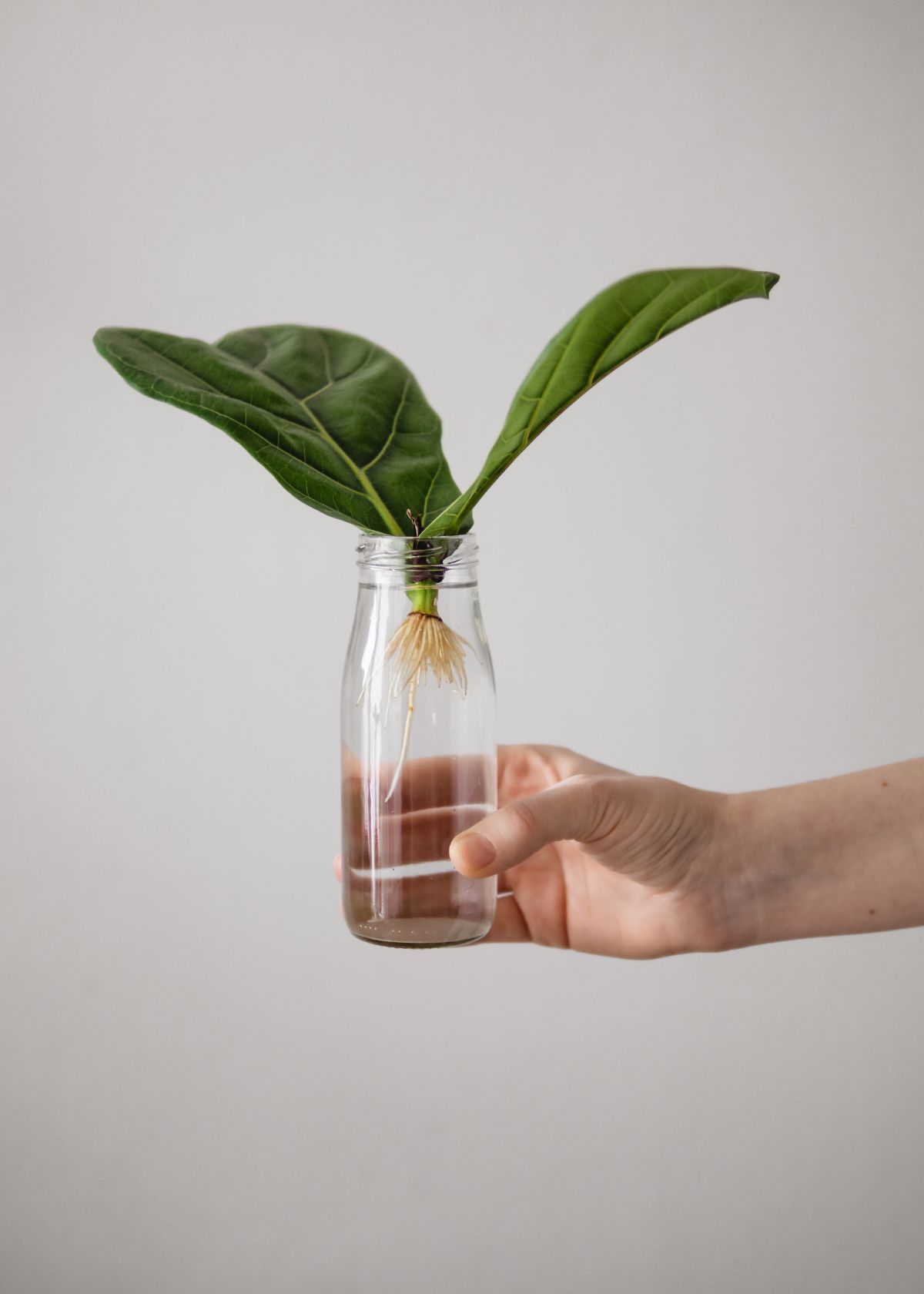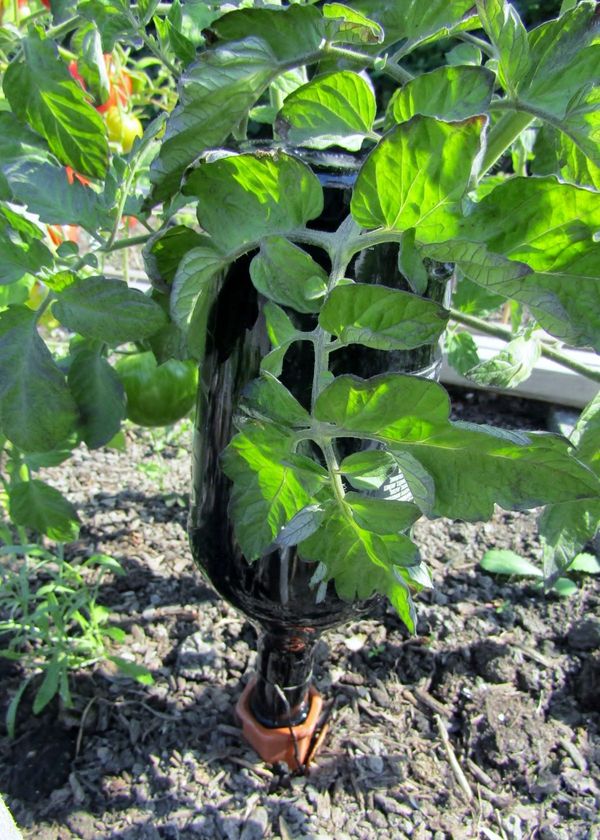If you were wondering, can your self watering pots work if you use self watering soil in regular flower pots? Yes, self-watering soil can be used in regular flower pots. It is specifically designed to regulate moisture levels and prevent overwatering. By using self-watering soil, you can improve the soil's water retention capacity in your regular pots, providing a more consistent and controlled water supply for your plants.
What is Self Watering Soil?
Self-watering soil, also known as water-absorbing or moisture-control soil, is a type of potting soil specifically designed to retain and release water as plants need. It contains additives such as vermiculite, perlite, or coconut coir, which have high water-holding capacities.
These additives absorb water very moist soil and slowly release it to the plant's roots, helping to maintain optimal moisture levels in the soil. Self-watering soil helps prevent overwatering and provides a more consistent water supply for plants, promoting healthier growth and reducing the risk of root rot.

Tips to Use Self-Watering Soil in Regular Flower Pots
Can you use a self watering pot or soil in regular flower pots? Well, here are some tips for using self-watering soil in regular flower pots:
1. Understanding Self-Watering Soil
Self-watering, water-absorbing, or moisture-control soil is designed to hold and release water as needed. It contains moisture-retaining additives such as vermiculite, perlite, or coconut coir, which help regulate moisture levels and prevent overwatering.
2. Selecting the Right Pot
Choose a regular flower pot with a drainage hole at the bottom. Self-watering soil and self watering planters work best when excess water can drain away through an overflow hole. This ensures that the soil remains moist but not soggy.
3. Preparing the Pot
Cover the drainage with a mesh or a coffee filter to prepare the pot for self-watering soil. This prevents the soil from washing out while still allowing water to drain. Place a saucer or tray beneath the watering pot to catch any excess water.
4. Adding a Reservoir
Self-watering soil relies on a reservoir of water to keep the plants hydrated. Create a reservoir at the bottom of the pot by adding a layer of water-absorbing material, such as perlite or hydrogel crystals. These materials will absorb water and slowly release it into the soil.
5. Filling the Pot
Fill the pot with self-watering soil, leaving enough space for the plant roots to absorb water in its root system. Press the soil down to remove air pockets and ensure good contact between the soil and the plant's roots.
6. Planting the Flowers
Dig a hole in the self-watering soil and carefully place your plant or seedling into it. Ensure that the top of the ball is level with the soil surface. Backfill the hole with additional self-watering soil and press it gently around the plant to secure it in moist soil.
7. Watering Initially
After planting, water the plants thoroughly to help settle the soil and initiate the self-watering mechanism. Pour water into the pot until you see it draining into the saucer. Once the water stops draining, empty the water storage tank saucer to prevent the plants from sitting in standing water.
8. Monitoring Moisture Levels
Regularly check the moisture levels in the potting mix. Insert your finger into the soil to about 2 inches (5 cm). If the soil feels moist, wait before watering again. If it feels dry, it's time to water the plants.
9. Watering the Reservoir
To maintain the self-watering system, periodically refill the water reservoir at the bottom of the pot. Pour water into the saucer, allowing the water-absorbing materials to soak it up. Avoid overfilling the reservoir to prevent waterlogging.
10. Adjusting Watering Frequency
Watering frequency will vary depending on plant type, environmental conditions, and pot size. Observe your plants closely to determine exactly how much water and often they require watering. Avoid watering too frequently or allowing the soil to dry out completely.
11. Avoiding Overwatering
Although self-watering soil helps prevent overwatering of plant roots, it's essential to exercise caution. Overwatering can lead to rots and other plant health issues. Always ensure proper drainage and avoid allowing the plant to sit in standing water for extended periods.
12. Fertilizing
Self-watering soil provides a good foundation for plant growth but may lack essential nutrients over time. Consider supplementing with a slow-release or regular liquid fertilizer to ensure your plants receive the nutrients necessary for healthy growth.
13. Adjusting for Climate
Plants may require more watering in hot and dry climates, while cooler and humid climates may necessitate less frequent watering. Consider your local climate conditions when determining your plants' watering needs.
14. Cleaning and Maintenance
Periodically clean the pot and saucer to prevent the buildup of algae, debris, or pests. Remove any dead leaves or plant material from the surface of the soil. This promotes healthy plant growth and prevents potential issues.
15. Troubleshooting
If you encounter any problems with your plants, such as wilting, yellowing leaves, or mold growth, it could indicate an issue with watering or the overall health of the plant. Adjust your watering practices, check for proper drainage, and consider consulting a local gardening expert for further assistance.
By following these tips, you can effectively use self-watering soil in regular flower pots and enjoy the benefits of improved moisture control for your indoor plants too. Happy gardening!

FAQs
Do you need special soil for self-watering planters?
No, special soil is not required for self-watering planters. However, using self-watering soil or adding moisture-retaining additives can enhance the soil's water retention capabilities and improve the self-watering system's effectiveness.
Can you use self-watering pots for all plants?
Self-watering pots can be used for a wide variety of plants. However, it's important to consider the specific watering needs of each plant and adjust the watering frequency accordingly. Some plants may still require occasional manual watering despite being in self-watering pots.
How do you turn a regular planter into self-watering?
Add a water reservoir at the bottom of the pot to turn a regular planter into a self-watering one. This self watering planter can be done by placing a layer of water-absorbing materials, such as perlite or hydrogel crystals, and then filling the rest of the pot with regular or self-watering soil.
Conclusion
In conclusion, if you were wondering, can you use self watering soil in regular flower pots? Yes, you can use self-watering soil in regular flower pots. Self-watering soil helps regulate moisture levels and prevents overwatering, providing a more controlled water supply for plants.
By following the tips mentioned earlier and utilizing self-watering soil and self-watering containers, you can improve the water retention capacity of your regular flower pots and ensure healthier and more vibrant plants. Enjoy the benefits of self-watering soil with your own self watering container in your gardening endeavors! We hope now you know the answer to you can use self-watering soil in regular flower pots.









